Collaboration marketing is one of the most powerful ways to not just survive but thrive in highly competitive markets. In collaboration marketing, two or more businesses pool resources to attain common goals (in this case, marketing goals) which are simply not achievable when going it alone.
In the 21st century, collaboration is the new success formula – you can achieve more, much faster and more efficiently, when you share your resources. In this essential guide, we will cover what collaboration marketing is and how it can benefit your business. We will also look at 11 specific examples of collaboration marketing, and how and why they work.
What is collaboration marketing (collaborative marketing)?
Collaboration marketing, otherwise called ‘collaborative marketing’, is a partnership (more specifically, a strategic alliance) between two brands. In this partnership, the brands offer a unique and exclusive product or service together that they couldn’t offer on their own. Sometimes, one “brand” in the collaboration is the personal brand of a celebrity or other influencer. And sometimes, the collaborative “service” is an event.
Collaboration marketing helps partners appeal to their shared audiences. As a result, each brand is able to expand its influence and increase its brand awareness amongst the target audience. Collaboration marketing is sometimes called affinity marketing.
Keys to a successful collaboration
For a successful collaboration, your brand, and the brand you partner (collaborate) with must have:
Shared brand values
Shared values can help solidify your strengths and diminish your weaknesses. Shared brand values also help you bond over ideas, trends, and concepts that are of mutual interest and benefit. It also makes it a lot easier for the marketers from the businesses involved to trust one another and establish synergy.
Another key takeaway with collaborations that spring from shared values is that they can prove to be a powerful force from the consumer perspective. Consumers are already looking for brands that share their values, so a collaboration between two such brands is especially convincing.
Shared audiences
Shared audiences are audiences with similar needs, desires, and demographics. They can include consumers that prefer a similar product or service, and consumers that like and engage with an aligned product or service that isn’t necessarily from the same niche.
Being able to share your audiences in this way through collaborative marketing gives both businesses an opportunity to cast the reach net much wider than when attempting it alone.
Products/services that complement each other but don’t compete
Collaboration marketing is ideal when the products and services are not in direct competition with each other. Otherwise, the partnership and messaging can easily confuse your customers. There are a few exceptions, though.
In our list of examples coming up next, we do cover a few competitor brands that have come together, but the strategies are well-thought-out and the results are still mutually beneficial in those cases.
Mutually beneficial goals for the collaboration
Each brand should have goals for the partnership that it can’t accomplish on its own. The partnership must benefit both brands equally.
It’s important to mention here that you don’t need to have phenomenal marketing clout or a big brand name to leverage collaboration marketing. According to Forbes, “collaboration as a marketing strategy can help instantly grow your customer base without spending a ton of money, a perfect plan for cash-strapped startups ” – and small businesses, we might add.
Essential steps for collaborative marketing
For a collaboration to run smoothly, brands will need to:
- Designate employees of each brand to work together and lead the collaboration: The team members must work closely with each other, building relationships and supporting the development of the collaboration.
- Discuss and solidify shared goals for the collaboration: Having this set up clearly at the outset is critical to prevent miscommunication and ambiguity. You’ll need to remain on the same page to achieve the expected results.
- Decide what the collaborative product or service will be: Zero in on the specific product or service that needs to be created, and how it will be developed.
- Decide how long the collaboration will last.
- Figure out what each brand will need to contribute for the collaboration to be a success: It could be one brand’s marketing resources and another brand’s technological capability, for example. Leverage your combined strengths.
- Communicate closely as you create the collaborative product/service together: Whether it’s developing a workflow, embedding automation, or even calibrating specific smaller goals along the way, communication is key to creating a successful marketing collaboration.
- Decide together how you will market the collaboration: Create a marketing plan with specific timescales and accountabilities. Have an understanding of how you will determine your success rates.
- Last but not least, commit to making the collaborative partnership a success: The success of the partnership is dependent on each business bringing their best to the table while committing to seeing the project all through to the end.
11 best examples of collaboration marketing at work
Here are 11 great examples that demonstrate the most important features of successful collaborative marketing in action:
1. Spotify and Uber (Spotify streaming during Uber rides)
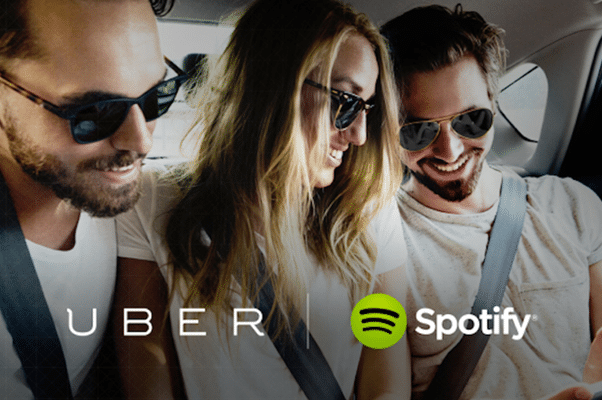
Uber is a brand that’s notable for innovation and consistently pushing the envelope in terms of what consumers expect from a ride-sharing company. Spotify, on the the hand, has been a game-changer within the audio streaming services industry, with currently no less than 356 million users, including 158 million subscribers, across 178 markets.
This pairing was destined to be a match made in heaven given the common focus on innovation and expansion. And both offerings work phenomenally well alongside each other.
Both Uber and Spotify have gained significantly from their collaborative partnership. Uber has been able to increase the level of personalization within the riding environment by giving users the ability to stream their favorite Spotify music in the car through the simple act of pushing a button. Spotify, in the meanwhile, was looking for another distribution channel to extend their offerings beyond mobiles and desktops.
The Uber-Spotify collaboration brought users a different kind of personalized experience that contributed greatly to increasing the brand value, appeal, and coverage of both brands.
2. Doritos and Taco Bell (Doritos Locos Tacos)
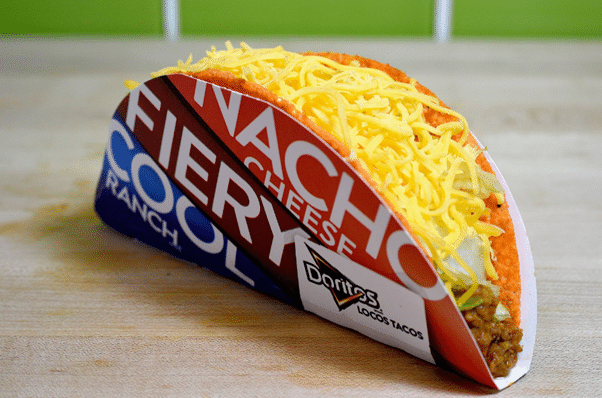
Doritos and Taco Bell’s partnership-based marketing strategy is a great example of how two businesses within the same niche/industry can work side by side and produce impressive results beneficial to both collaborators.
The product called the ‘Doritos Locos Tacos’ promised a Taco Bell style taco delivered inside a crispy Dorito shell and customers were quickly taken with the quirky product. It was the same great taco inside a crispier, crunchier, Dorito shell with the original well-loved tastes very much intact.
On another note, the packaging (see the image) is a great example of how to leverage co-branding to appeal, connect with, and leverage the huge customer base of both businesses.
If anything, the Doritos Locos Taco was not a new product, it was two existing products re-engineered to produce something innovative. According to Business Insider, in terms of bottom-line impact, Taco Bell, “sold more than a billion units in the first year. The fast-food company had to hire an estimated 15,000 workers to keep up with demand.”
3. Kanye West and Nike (Yeezys)
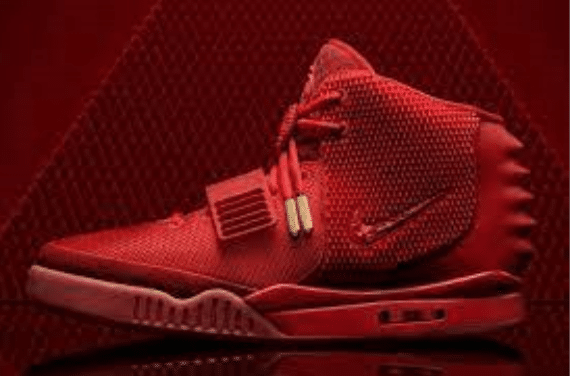
When Kanye West and Nike decided to collaborate on a sneaker project, the result was the Nike Air Yeezy, a flamboyant looking sneaker that had West’s distinctive style and fashion flair stamped all over it. It was the first time that an entertainer had full reign to completely design his own model of the sneaker.
The first edition of the Yeezy, released in 2009, was priced at $225 for retailers. But given that there were only 3000 pairs in circulation and the ensuing hype, prices would continue to soar in resale value to more than $4000 for a pair. In fact, a pair of Nike Yeezys worn by West at a Grammy Awards function sold for $1.8 million at a Sotheby’s auction.
The ‘Red Octobers’ version of the second Yeezy edition, released exclusively as a surprise event on the Nike website, sold out reportedly in a matter of seconds.
Brands collaborating with influencers is certainly not new. When an influencer and a just-as-recognizable brand come together, its’ strategic marketing at its finest. Nike was able to win new audiences from among West’s cult-like musical following, while West got not just the creative satisfaction of designing the sneaker but considerable returns in terms of royalties.
4. Disney and Lyft (Disney’s Lyft Minnie Van)
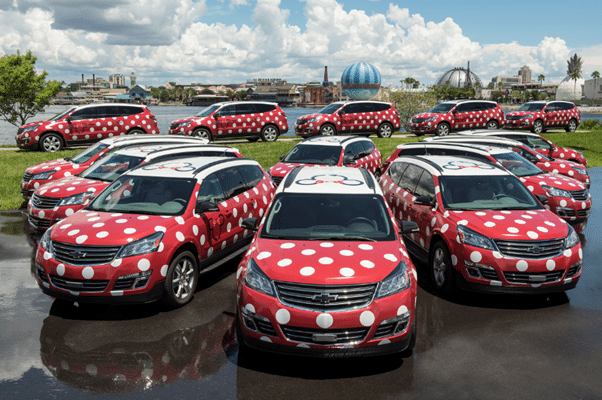
When the wholesome family brand Disney wanted to launch its Minnie Van service for its theme park, it went with Lyft which also traditionally has a ‘nice, clean’ image as compared to, say, Uber. It was a very strategic partnership on the part of Disney, given that both companies have popular and family-friendly brand images, i.e. shared brand values.
The Minnie Van service was to be provided to theme park visitors between 6:30 AM and 12:30 AM for a flat $20 fee and would be driven by Disney employees. Visitors could make use of regular Lyft rides at all other times. The Lyft family-friendly vans were painted in Minnie Mouse’s ‘brand’ colors distinctive in their red base with a white polka dot design.
The collaborative effort enabled Disney to provide an additional service offering that would enhance the consumer experience for its target market. Lyft in the meantime, found another way to leverage Disney’s audience to enhance its brand appeal and popularity with family audiences.
5. Target and Lilly Pulitzer
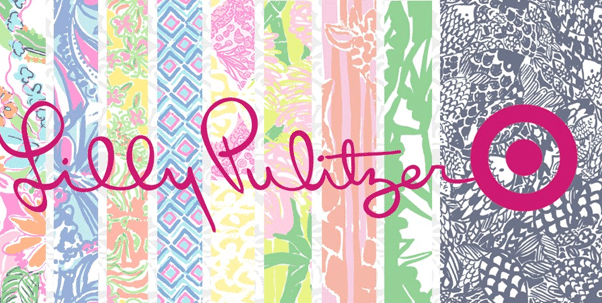
The Lilly Pulitzer 250-piece limited edition collection designed for Target had the unique distinction of being sold out almost immediately both online and in stores. It was yet another successful marketing collaboration for Target whose previous partners included the likes of Altuzarra, Zac Posen, and Jean-Paul Gaultier.
Contrary to popular belief, the lower prices on the Pulitzer collection for Target did nothing to dampen its appeal because of how limited the collection was – a very smart and strategic way to get exposure but still maintain a level of exclusivity.
Lilly Pulitzer is an American fashion designer whose clothes and accessories feature bright floral patterns. Target is currently the 8th largest retailer in the United States. The collaboration is a great example of how to create an offering that doesn’t compete with either brand but serves the purpose of generating a much larger audience for each.
6. BMW and Louis Vuitton
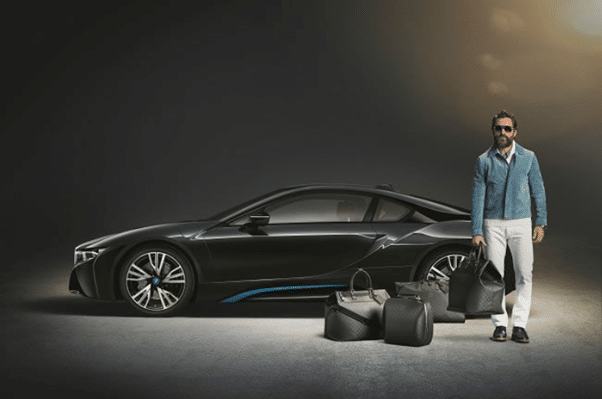
At first glance, a BMW and Louis Vuitton partnership can seem like an unlikely pairing, but both brands have a lot in common underneath the surface. Both are seen as high-end, luxury brands, with impeccable craftsmanship, favored by a discerning clientele. Their shared values would come together to create a unique and successful partnership.
For this collaboration, Louis Vuitton would create an exclusive collection of four suitcases and bags to serve as travel companions for BMW’s latest technological innovation, the plug-in hybrid BMW i8.
At $20,000 for the LV luggage set, and a starting price of $135,700 for the BMW hybrid, this was indeed a marketing collaboration structured to appeal to a smaller but highly targeted customer base.
A BMW owner would appreciate the timelessness and sophistication of a Louis Vuitton product, while a Louis Vuitton buyer would understand the craftsmanship and technological innovation that went into the BMW i8. Shared values and a similar kind of audience profile would help this collaboration extend its reach to the right type of consumer.
7. CoverGirl and Star Wars
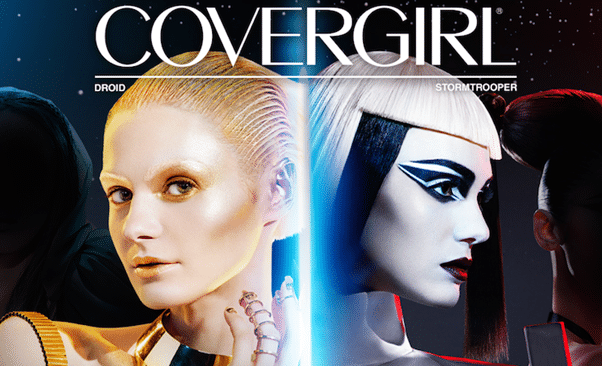
Another unique and unlikely pairing was that of CoverGirl cosmetics and Lucasfilm of Star Wars fame. Star Wars was already a behemoth marketing franchise worth an estimated $37 billion at the time and CoverGirl wanted to leverage their fans’ purchasing power.
The collaboration would also extend the reach of the Star Wars fan base to a new audience wanting to recreate makeup looks aligned to Star Wars.
CoverGirl would launch a line of limited-edition cosmetics to coincide with the release of the latest movie in the franchise, Star Wars: Episode VII — The Force Awakens. The marketing campaigns featured seven intergalactic looks (like the ones pictured above) and consumers could purchase the complete look or the entire product range.
The 19-piece limited-edition makeup collection included 6 lipsticks, 3 nail polishes, and 10 mascaras, each product stamped with the logo and a specific quote from the Star Wars movies.
This collaboration is a great example of how two traditionally non-aligned, non-competitive products could come together to create new products that would increase brand visibility by association and bring in new audiences.
8. KFC and Cheetos
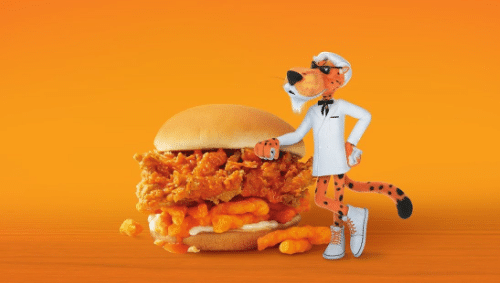
For a 4-week period in July of 2019, KFC and Cheetos decided to launch and promote their combined labor of food-love called the ‘KFC Cheetos Sandwich’ to the delight of long-time fans and customers nation-wide
The KFC Cheetos Sandwich is a classic KFC crispy fried chicken drenched in special Cheetos sauce. If this wasn’t fast-food heaven enough, the chicken would also be served on a bed of crispy Cheetos with mayo inside a KFC bun.
Done right, food innovation is the quickest way to your customers’ hearts. This was a great win for two food brands who understood customer tastes and preferences, and invented a product that would become a sure-fire hit.
9. Burger King and McDonald’s
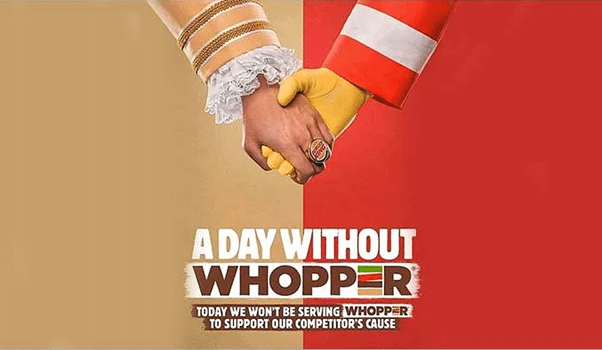
This collaboration is an example of how you can align with your fiercest competitor within the same niche and having similar products to (gasp!) promote each other’s brands to resounding success. It’s easy to be a sceptic, but the marketing teams for both McDonald’s and Burger King came up with a fresh and clever angle that the public lapped up with considerable enthusiasm.
Burger King decided to take their top-selling Whopper off their menu for a day to convince customers to buy McDonald’s instead. This was to support a McDonald’s charity initiative of donating $2 to cancer charities for each Big Mac burger purchase, AKA ‘A Day Without a Whopper’.
McDonald’s sold an extra 73,437 Big Macs raising a record amount for the charity. Burger King was able to generate considerable goodwill, appreciation, and brand value from both sides of the fence in the process.
10. Apple, Goldman Sachs, and MasterCard (Apple Card)
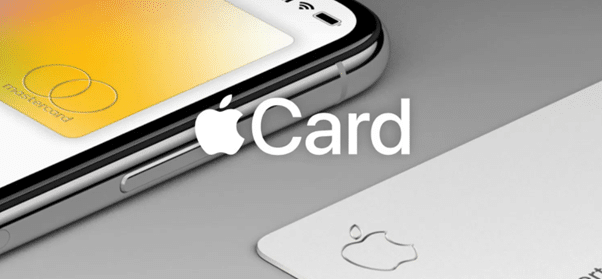
A collaborative coup of sorts, the Apple Card collaboration brought together 3 powerhouse brands to create an innovative, game-changer product to enhance the Apple customer experience.
The Apple Card was designed to be a new type of credit card that would support a healthier financial lifestyle for the Apple end-user. Goldman Sachs and MasterCard would provide the advantages of an issuing bank and a global payments network needed for Apple to successfully execute the product.
According to the Apple website, the “Apple Card transforms the entire credit card experience by simplifying the application process, eliminating fees, encouraging customers to pay less interest and providing a new level of privacy and security.”
The benefits of this collaboration are a no-brainer – Apple gets to bring more value into the relationships it has with its loyal customers while providing another incentive for new customers to come on board. Both Master Card and Goldman Sachs walked away with a tiny, but formidable piece each, of Apple’s revenue pie.
11. GoPro and Red Bull

American technology company GoPro (best known for its action cameras) and Red Bull, the ‘wing-giving’ energy drink brand, joined forces in 2016 to create a global partnership that would include technological innovation, content production and distribution, as well as cross-promotion.
The two brands have tremendous clout in the sports community and had been associated with each other, one way or the other, previously. This time around they decided to make it official. The reach of both brands together is considerable. At the time of their partnership launch, their combined fan following exceeded 80 million across multiple social media channels.
According to The Inside Line, “Red Bull will receive equity in GoPro and GoPro will become Red Bull’s exclusive provider of point-of-view imaging technology for capturing immersive footage of Red Bull’s media productions and events.”
GoPro wasn’t in the best financial health at the time of the deal, however, post the partnership their stock grew by 7% (real-world ‘metrics’), proving just how much strategic marketing in the form of collaborations can impact bottom-lines.
Red Bull, in the meanwhile, bought equity in GoPro and would also have an exclusive provider for ‘point-of-view’ imaging technology for capturing immersive footage of Red Bull’s media productions and events to the tune of about 1800 events across over 100 countries.
Wrapping up
Collaboration marketing is a necessity for businesses to go further and achieve a lot more than they can by themselves. Successful collaborative partnerships require solid planning, relationship management, goal mapping and tracking, and commitment to making the partnership work.
Even in the form of affinity marketing or a strategic alliance, both of which are seen as similar strategies, collaborative marketing is a trend that’s here to stay.




